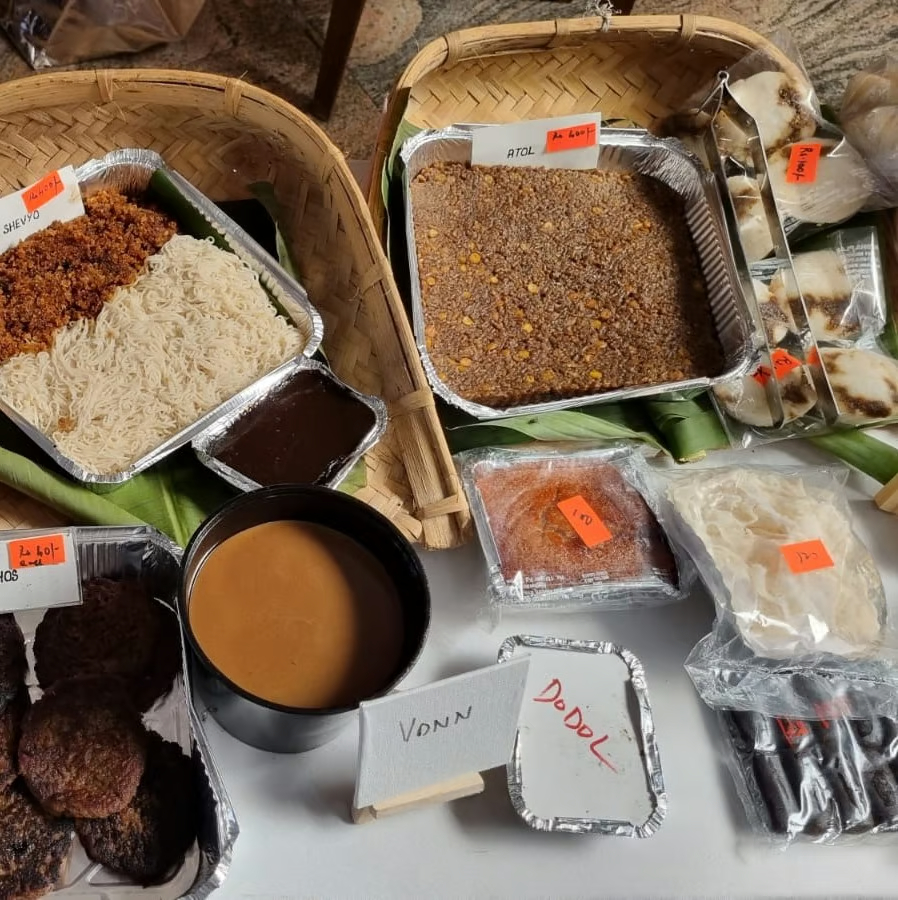
In Goa, August brings monsoon rains that create a lush, vibrant backdrop for local culinary traditions and sweets. These sweets reflect Goa’s rich culinary heritage and are especially cherished during the monsoon season for their comforting and festive qualities. The staple food of Goa is rice, fish, and curry, and rice cultivation begins in June. The crop reaches maturity by mid-August and is ready for harvesting in September and October.
Preparing for Sweet August Traditions
Every year, in the last week of July, elders remind the younger generations to ensure there is enough jaggery and parboiled rice to prepare something sweet for August. It is customary to prepare something sweet at home on the first day of August. Children enjoy the process of making and eating the sweets, often not knowing the reason behind the tradition.
The Tradition of ‘Shevyo’ on August 1st
On the first day of August, every Goan family traditionally prepares ‘Shevyo’. These are rice vermicelli mixed with grated coconut and coconut jaggery. The ‘Shevyo’ are prepared by placing steamed rice cakes into a vermicelli maker called ‘Shevgo’. This device is often made of wood, iron, or brass. Not every family owns a ‘Shevgo’, so some have to borrow it from neighbors or rent it for a day. Those who do not prepare ‘Shevyo’ ensure they at least eat a piece of jaggery on the first day of August.
Celebrating ‘Novidade’ with Sweets
Different parishes in Goa celebrate ‘novidade’ on different dates in August. Every Catholic family prepares ‘Patolleo’, a rice dumpling stuffed with grated coconut and jaggery, generally wrapped in a turmeric leaf. A local myth says that droplets of steam from the steamer used to cook ‘Patolleo’ can cause warts if they fall on the skin. Families in mourning are not allowed to use the steamer, and their neighbors offer them something sweet instead.
Other August Sweets
Other sweets prepared in August include ‘Folle’, cone-shaped rice dumplings prepared in cones woven out of jackfruit leaves, and ‘Aatol’, a semi-solid cake comprising palm jaggery, grated coconut, split chickpea, and wheat. ‘Aatol’ is prepared on the day of harvesting the crop and also for special occasions like laying the foundation stone of a new house or raising the first beam of a house.
The Proverb of August
The proverb “Agosto, bom gosto ou Agosto desgraça” suggests that August is a month full of good tastes but can be disgraceful for families running out of food before the new crop is ready to harvest.
Hindu Traditions and Sweets in August
Pankaj Kamble from Navelim revealed that on the occasion of ‘Naag Panchami’, every Goan Hindu family prepares ‘Patolleo’. ‘Naag Panchami’ is celebrated in the second week of Shravan, according to the Indian Calendar. On this occasion, some Hindu families offer the sweet to snakes in their fields, hoping not to be harmed by them. Salt-free ‘Patolleo’ are offered to Goddess Parvati on Hartalika, as it is believed she craved this sweet during pregnancy. A variation of ‘Patolleo’ is prepared in Kerala during Onam, known as ‘Ely Ada’.
Modaks for Ganesh Chaturthi and Sankashti
During Ganesh Chaturthi and every month on ‘Sankashti’, the Hindu community prepares ‘Modaks’. These are onion-shaped dumplings made with rice flour dough and a sweet coconut jaggery filling. The Modaks made for Sankashti are different as they use wheat flour instead of rice flour and are fried instead of steamed. Worshiping Lord Ganesha on Sankashti ensures blessings of peace and prosperity in the upcoming times.

